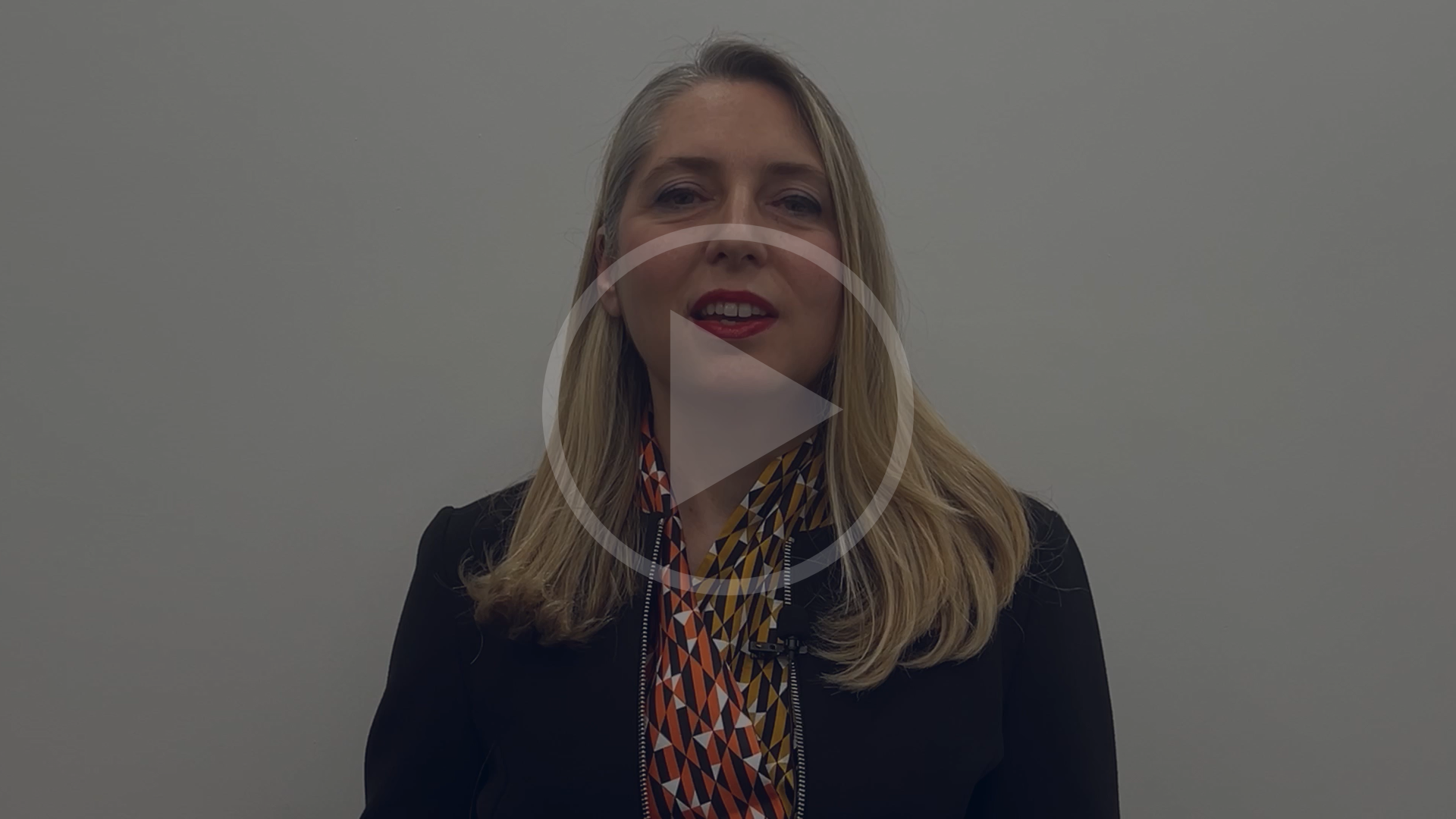
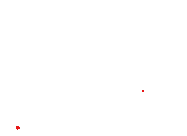
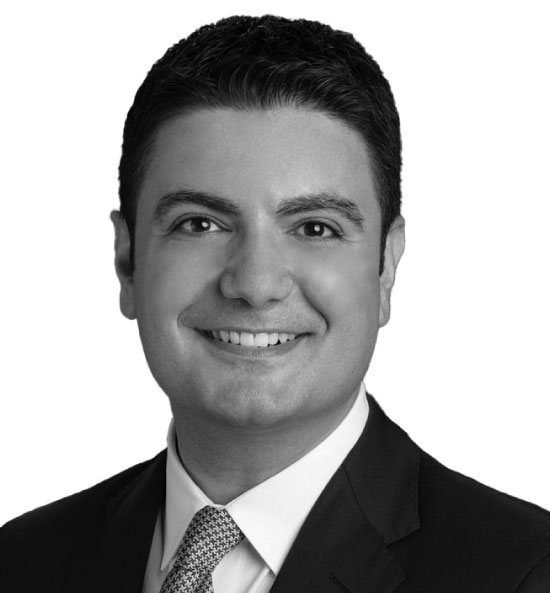
Dr. Sercan Akyalcin is the Head of Orthodontics at Harvard School of Dental Medicine. He has a DDS-PhD degree and is a graduate of the orthodontic program at the University of Texas Health Science Center at Houston. Before joining Harvard University, he was a faculty member at Tufts University School of Dental Medicine in Boston, where he also served as the chair and graduate program director of Orthodontics.
Dr. Akyalcin is active in many leadership roles, serving on the Northeast Society of Orthodontists (NESO) Board of Directors and representing NESO on the House of Delegates at the AAO. He also advocates for the Northeast region on the AAO Council on Education. As a dental educator and orthodontist, he has published fifty peer-reviewed papers, co-edited a textbook, contributed to twelve other orthodontic books, and served on the editorial boards of orthodontic and dental journals. In addition, he has been recognized with several awards in the field, including the 2019 Edward H. Angle Research Prize. Additionally, he serves as an examiner for the Council on Dental Accreditation and the American Board of Orthodontics.
Recent developments in 3-D printing technology and customized and personalized therapy have made many options available for clinicians in treating orthodontic malocclusions. While many approaches are relatively new, we began to observe their superior outcomes in terms of precision, treatment length, and patient comfort. But are the custom appliances worth the hype?
After attending this talk, the clinicians will better understand precision orthodontics and personalized treatment while recognizing the importance of incorporating diagnostic information in the treatment mechanics. The presentation will touch on critical points for clinicians to familiarize themselves with customized appliance design and fabrication. Finally, it should be clear to all attendees how to plan and execute the treatment of complex cases with a personalized approach. The presenter will use case examples and demonstrations to present the power of digital orthodontic tools and how they could be a part of every practice.
Orthodontic malocclusions, specifically skeletal Class II and open bites present unique challenges for orthodontists to diagnose and treat efficiently. Many of these challenges relate to the vast diversity of the clinical presentation and complicating factors such as incisor position and torque, the need for transverse expansion, and vertical management of the case. In this seminar, the participants will be trained to diagnose and treat the cases with the “end-in-mind” approach. The course will focus on the case finishing from multiple aspects:
How to achieve excellent case outcomes reflecting the board standards
How to utilize the remaining growth and mechanotherapy to improve the facial esthetics
Smile-design strategies and positioning the teeth accordingly
How to be mindful of relapse and strategize the retention protocols accordingly

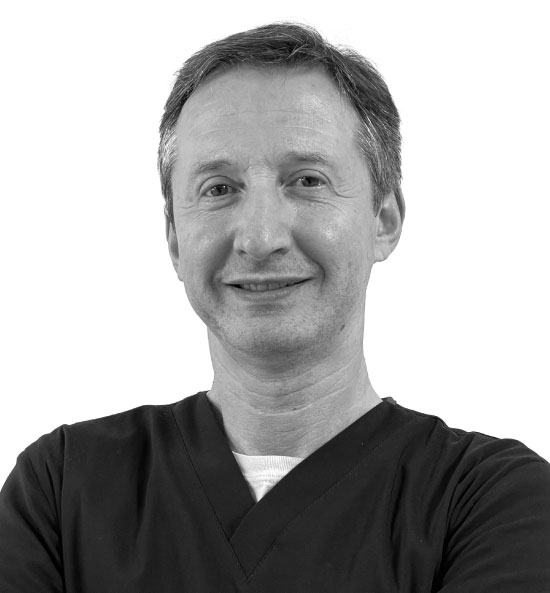
Having completed his primary and high school education in Bulgaria, Yuksel ALEV started his undergraduate education in Plovdiv in 1987 at the Faculty of Dentistry and graduated with honours in 1992.
He worked as a dentist until 1999 and in the same year he has been accepted to a PhD education program at Ege University, Faculty of Dentistry, Department of Orthodontics. In 2005, he graduated by receiving the title "Doctor of Orthodontics" and subsequently opened a private practice in Izmir, Turkey.
Dr Yuksel Alev regularly attends national and international congresses, seminars, and courses in order to follow the latest developments in orthodontics. He is a member of the Turkish Dental Association, Turkish Orthodontic Society and Society of Private Orthodontists.
He has two registered patents covering the field of orthodontics. Dr Yuksel Alev is married and has one child.
The maxillary expansion is a method used to correct discrepancies in the upper jaw that occur because of its inadequate development. Since the level of underdevelopment and structural anatomy differ from person to person, treatment plans should be made individually. Today, digital applications not only replace many conventional approaches in our field, but also help us get easier and more precise results. By evaluating teeth, soft tissue, and bones in a virtual environment and by using special programs and production techniques, it is possible to design more effective customized bone-supported expansion devices. During the presentation, digital planning approaches and their reflection on clinical practices will be explained.

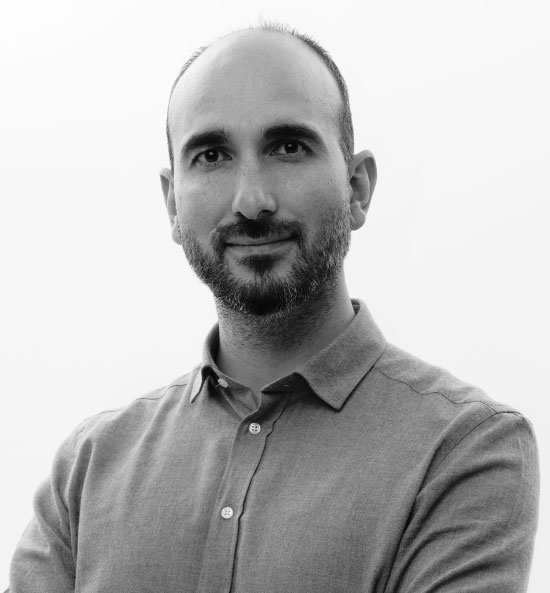
2010 - Istanbul University, Istanbul, Turkey, DDS., Faculty of Dentistry
2017 - İstanbul University, Istanbul, Turkey, PhD., Faculty of Dentistry
2017 - Visiting Scholar, Virginia Commonwealth University, Department of Orthodontics
2019 – 2021 Founder and Chair of Education Committee, Turkish Aligner Society
2020 Founder, Aligner Class Education Platform
2021 – Present Head of the Organization Committee, Turkish Aligner Society
2021 – Present Board Member, Turkish Aligner Society
2022 – Translator of the book chapter 8: Deep-Bite Treatment and Chapter 9: Open-Bite Treatment in the book “Clear Aligner Technique” by Sandra Tai.
2023- E. H. Angle Society North Atlantic Component Affiliate Member
He gives lectures on ‘Orthodontic Treatments with Clear Aligners’ in Turkey and various countries.
Certificated user of ‘Incognito Lingual System', ‘Invisalign System’ and ‘FACE System’
2021- Present Invisalign Clinical Speaker
2019- Present Working in his own practice ‘Caner BALTA Orthodontics’ Istanbul, Turkey
Over the past 15 years, orthodontic treatments have become increasingly integrated with digital tools. Although digital tools give orthodontists a lot of leeway in many areas, they also bring many unknown areas. The place of digital tools in orthodontic treatments with clear aligners is significantly higher than in classical orthodontic treatments, which can cause anxiety in orthodontic specialists at some points. While treatments with transparent aligners better meet the aesthetic expectations of patients, they also provide a more comfortable orthodontic treatment process for patients. There is a widespread acceptance that orthodontic treatments are easier for physicians to apply. So, what really awaits orthodontists in the planning and clinical application of orthodontic treatments with clear aligners? What do orthodontists need to know in order to tightly integrate orthodontic science with these emerging devices? From planning software to biomechanical principles, from clinical practice to patient processes, orthodontists need to integrate existing habits into new experiences. This presentation will detail how digital tools and the digitalized world can be adapted to the orthodontic clinic.

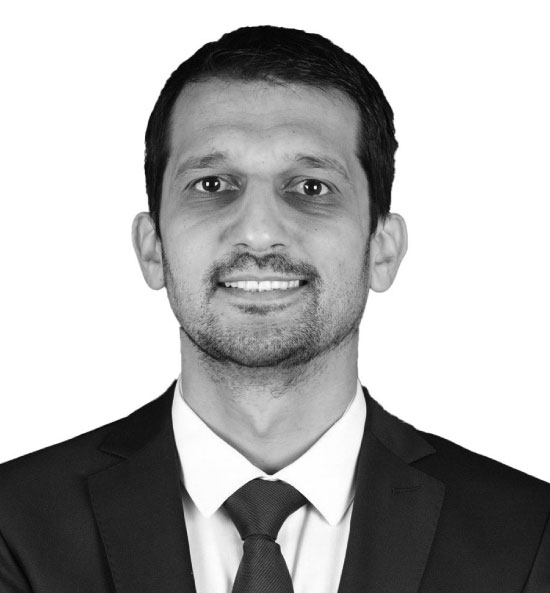
Ordu University, Faculty of Dentistry, Department of Orthodontics & 3Dentistry CEO
Dr. S. Kutalmış BÜYÜK, completed his doctorate education at Erciyes University Health Sciences Institute, Department of Orthodontics and qualified as an Orthodontic Specialist after graduating from Atatürk University Faculty of Dentistry. He received the title of Associate Professor in the field of Orthodontics in 2020. He currently works as a faculty member at Ordu University, Faculty of Dentistry, Department of Orthodontics. He founded 3DENTISTRY Enterprise Education Consultancy Research Development Design Industry and Trade Limited Company supported by Teknokent in March 2023 which produces 3D Printer technologies. Assoc. Prof. Dr. S. Kutalmış BÜYÜK has more than a hundred articles on the field of dentistry published in Science Citation Index-Expanded and other journals, and his H index is 17 (Web of Science). His main areas of study; 3D Design in Orthodontics, 3D Printers in Dentistry, Accelerated Tooth Movement Methods in Orthodontics and Clear Aligners.
Additive manufacturing or rapid prototyping, commonly known as 3D printing, enables precise and custom production by creating objects layer by layer from digital models. All orthodontic applications, from aesthetic orthodontic brackets and tubes to orthodontic models, from nasoalveolar molding appliances to directly orthodontic clear aligners, can be produced quickly and with high precision, without the need for long-term laboratory procedures with Dental 3D Printers used in orthodontics. In this presentation, 3D Printers used in orthodontics and the workflow in clinical practice will be explained with the help of current literature.

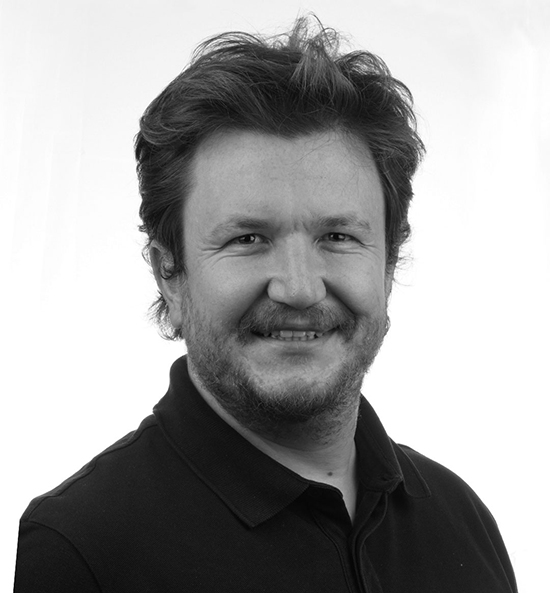
He graduated from Hacettepe University Faculty of Dentistry in 2011 with a degree, and in 2018, he completed his specialization in orthodontics at Izmir Katip Çelebi University Faculty of Dentistry, Department of Orthodontics.
He is a member of the Turkish Aligner Society and the European Aligner Society, and his areas of interest include digital dentistry, dental photography, clear aligners and temporary anchorage devices (TADs).
He gave courses about clear aligners in many countries from Europe to the Far East. He also made presentations at many national and international congresses and symposiums.
Ramadan Coşkun, who has been a consultant at Orthero since 2018, continues his clinical studies in his private practice in Bursa.
With the inclusion of 3D printers, scanners and high-capacity computer programs in orthodontic practice, the usual appliances have been replaced by technology-supported appliances. The most striking of the mechanics that have changed their face in response to patients' aesthetic treatment expectations are the clear aligners that we have started to use frequently in clinical practice. The biggest question that comes to mind in this process where we have reached micron precision production capacity is, of course, the direction of our future. Are clear aligners, with which we can plan every stage of treatment with predictability, sufficient and powerful enough to enable us to achieve all the results we have planned without the need for additional support, as claimed?
In this presentation, with case samples treated with clear aligners, we will try to answer in which direction our future will take us.

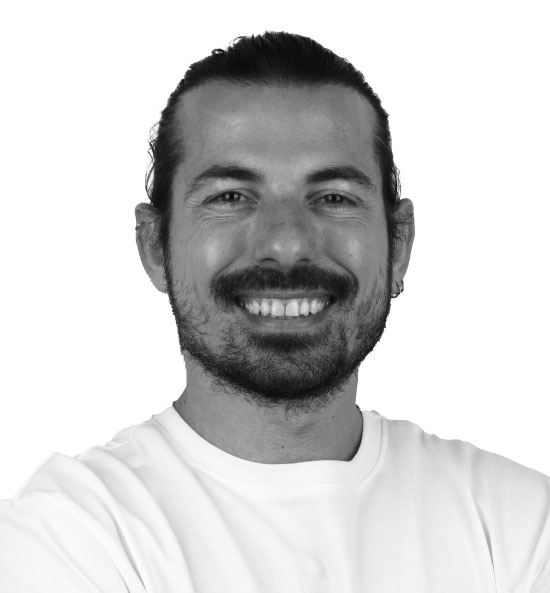
Dr. Eser Çapan graduated from Istanbul University in 2007 and completed his PhD at the Department of Orthodontics of the same university in 2014.
Between 2014 and 2021, he worked at Clinik Vivadent, which he co-founded, located in Nişantaşı, Istanbul.
Since 2021, he has been continuing his work at his private practice also located in Nişantaşı.
He is the founder of Aline For Me, providing treatment planning service to orthodontic specialists for clear aligner treatments.
He is an Invisalign clinical speaker.
In these times where digitization is increasingly becoming integrated into dental and orthodontic clinical practice, advancements in technology have introduced various alternatives to the conventional treatment methods we are accustomed to. Especially, clear aligners have emerged as a significant alternative to fixed mechanics. Sometimes, creating a biomechanical advantage suitable for the case, sometimes meeting patients' aesthetic expectations, sometimes following industry trends, and even sometimes under the influence of social media, have greatly motivated many orthodontists to incorporate clear aligners into their clinical practice. This contemporary treatment method, alongside offering many promising aspects, also brings many unknowns for orthodontists.
This presentation aims to explain how the realism of virtual orthodontic treatments observed in digital planning tools can be evaluated based on fundamental orthodontic principles when planning treatment with clear aligners.

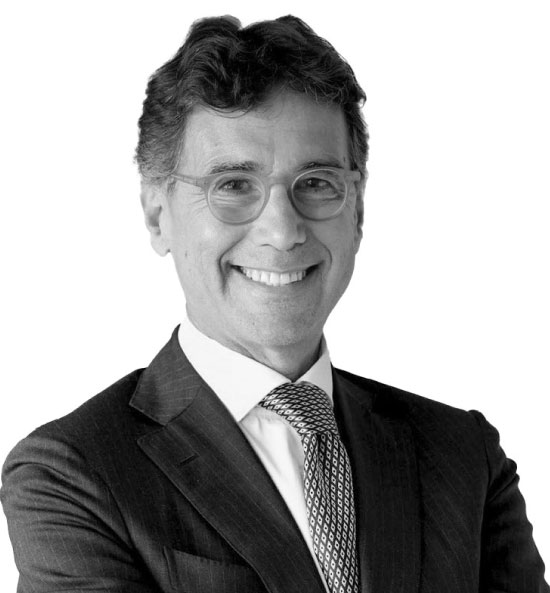
Aldo Giancotti has run his orthodontic practice based in Rome (Italy) since 1984, focusing on prevention, diagnosis, and treatment of dental malocclusions and related disorders. Its mission consists of offering patients, teenagers and adults, topnotch treatments by means of the most recent technology. Further underscoring its reliability, the practice matches excellence certifications of the I.B.O. (Italian Board of Orthodontics) and E.B.O. (European Board of Orthodontics), constantly enhancing progress and innovation concerning smile and facial aesthetics by means of cutting-edge technology.
The use of clear aligners in orthodontics represents an effective and convenient treatment alternative for the achievement of appreciable results in Class II malocclusion cases.
Indeed, depending on esthetic and social reasons, growing patients might be reluctant to undergoing fixed appliance-based treatment. On the other hand, parents and specialists have often been doubtful as to their level of enthusiasm and cooperation towards removable clear aligners. Moreover, despite the consistent number of publications on Class II treatments with aligners, treatment protocols are not so clearly defined nor universally accepted, hence not allowing for a standardization and simplification of such orthodontic treatments.
The aim of this presentation is to critically analyze the existing biomechanical and clinical protocols and, in turn, suggest a suitable schematic Class II treatment protocol, while emphasizing the importance of a proper patient selection before proceeding with aligner-based therapy.
Throughout the lecture, the 5 biomechanical steps routinely followed by orthodontists in non-extraction treatments of Class II malocclusions are described step-by-step. The suggested protocol features the early application of interarch elastics for proper Class II correction, upper molar distal rotation, and sequential distalization of bicuspids and cuspids. Moreover, it is evidenced how the proper use of aligners can minimize potential side-effects of Class II elastics, as well as allowing for mesial mandibular repositioning.
While considering alternative treatments (i.e. fixed appliances, hybrid treatments), the use of clear aligners for the purposes of Class II malocclusion correction in growing patients should be considered as an effective and reliable option when biomechanic principles and treatment staging are properly applied and patient compliance is favorable.

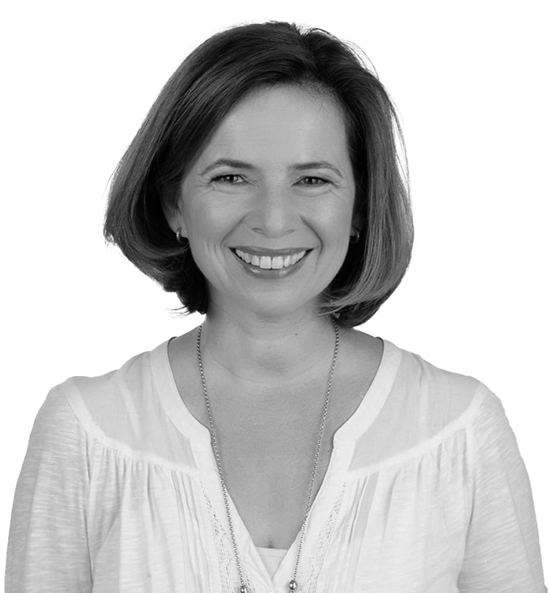
Study of dentistry at the Wilhelms University in Münster, Germany
Three-year dental qualification in the Polyclinic for Prosthodontics at the Westphalian Wilhelms
University in Münster / Prof. Dr. R. Marxkors
Five-year orthodontic specialization in several specialized practices and at the Westphalian Wilhelms-University Münster/ Prof. Dr. U. Ehmer
1999 Joint practice with Dr. Sabine Friedrichs in Erding
2003 Obtaining the authorization for further training for orthodontists
2006 Specialization in CMD through 2-year advanced training at several German universities
2011 Master of Science Lingual Orthodontics at the Hannover Medical School
2013 Certification for the Invisalign System
Since 2015 working in an interdisciplinary dental team with a focus on adult patients in Munich
Since 2015 lecturer for the Damon System in Europe October 2020 Damon Ultima Founder
Since 2020 Spark user
Since August 2021 international Ultima Speaker Since 2022 International Spark Speaker
Since 2023 user of the DMD System
With these two alternative treatment appliances the orthodontist has two completely di9erent treatment options at his / her disposal. If you take part in the various highly qualified international courses and follow the numerous very broadly trained clinicians, you will find that almost every malocclusion can be treated successfully with both the one and the other treatment system. For colleagues who o9er both systems in their practice, the question may arise as to whether there are more objective, treatment-specific or biomechanical reasons that could influence the decision, beyond patient preferences. This lecture is intended to give some food for thought and examples for this and the decision of the best individual treatment equipment for the patient.

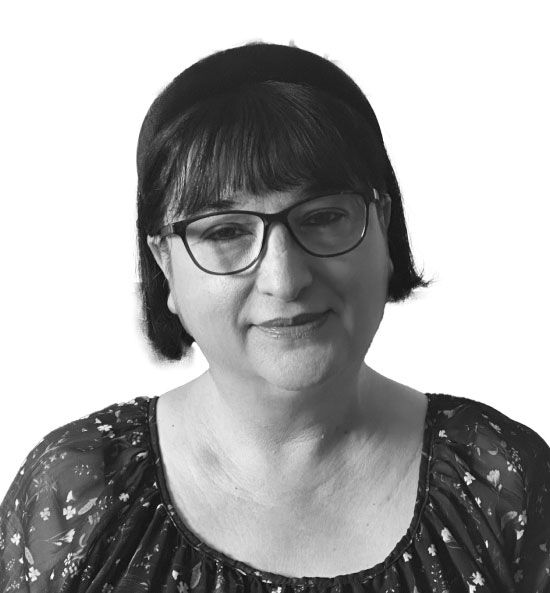
Dr. Funda Gülay Kadıoğlu graduated from Hacettepe University Faculty of Dentistry, then completed her doctorate in Medical Ethics at Ankara University Faculty of Medicine and doctorate/specialization training in Orthodontics at Çukurova University Faculty of Dentistry. She currently serves as a faculty member at Çukurova University Faculty of Medicine and Faculty of Dentistry. She is a founding member of the Turkish Bioethics Association, a board member of the Medical Ethics and Law Association, and a member of the International Dental Law and Ethics Society and the Turkish Orthodontic Society. She is the chair of the Ethics Committee of the Turkish Dental Association, of which she is a founding member. She has articles and chapter authorships in national and international journals and books. Her areas of interest include “ethical dilemmas in orthodontics”, “ethical decision-making process in clinics”, “decision-making capacity in adolescents”, “sustainability in dentistry”, “medical humanities”, “healthcare politics” and “gender equality”.
Sustainable healthcare systems are those which consider the long-term social and environmental impacts of health services, utilizing existing resources effectively, and concurrently addressing the health rights and needs of future generations. The key components of such systems include reducing, recycling, and reusing medical waste, energy efficiency, minimally invasive practices, reduced carbon footprint, effective management of toxic wastes and the design of hospitals and offices in accordance with eco-friendly principles. Digital orthodontics, which analyses the patient's oral structure using digital technologies, simulation software, three-dimensional scanners, and printers, not only crafts an ideal treatment plan but also designs and manufactures therapeutic materials. It offers the advantages of more precise measurements and predictability compared to traditional orthodontic methods. However, the environmental sustainability of treatment with clear aligners, a significant advancement in digital orthodontics and increasingly favored by patients, remains a topic of controversy in academic literature.
Due to the digital technology, digital orthodontics significantly reduces resource and energy consumption by minimizing materials and process steps compared to traditional orthodontics. Additionally, it incorporates the use of renewable energy sources and contributes positively to patients' carbon footprints by reducing the number of clinic visits required. Nevertheless, digital orthodontic products can occasionally contribute to environmental issues. Specifically, clear aligners, once they have served their purpose, transform into contaminated medical waste, with routine recycling methods often unable to accommodate this substantial volume of waste. Moreover, the possibility of various polymer types within the aligners containing microplastics prompts a reevaluation of the environmental impact of these materials.

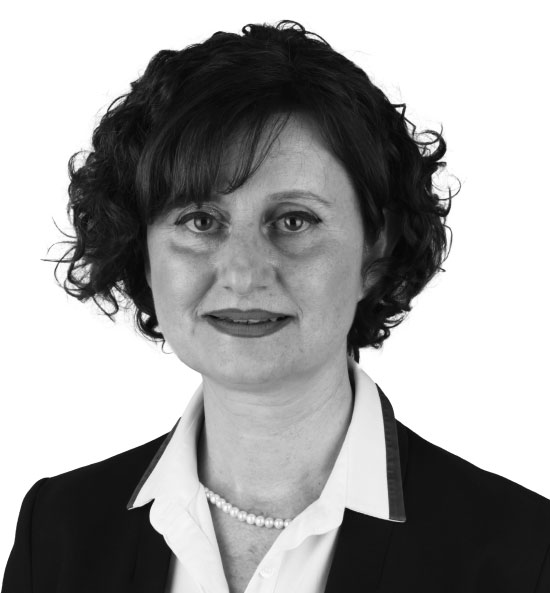
1981-1988 TED Ankara Collage
1988-1993 Hacettepe University, Faculty of Dentistry
1998-2002 Gülhane Military Medical Academy (GMMA), Center of Dental Sciences, Department of Orthodontics, PhD Education
2002-2004 GMMA Center of Dental Sciences, Department of Orthodontics, Orthodontist
2004-2007 GMMA Center of Dental Sciences, Department of Orthodontics, Assistant Professor
2008-2014 GMMA Haydarpaşa Training Hospital, Dental Service, Associate Professor
2014-2016 GMMA Haydarpaşa Training Hospital, Dental Service, Orthodontics Section Chief, Professor
2016-2024 University of Health Sciences, Hamidiye Faculty of Dentistry, Head of Department of Orthodontics
2017-2019 University of Health Sciences, Hamidiye Faculty of Dentistry, Founding Vice Dean
2019-2022 University of Health Sciences, Director of Hamidiye Health Sciences Institute
2024- University of Health Sciences, Dean of Hamidiye Faculty of Dentistry
Rapid changes in digital technology have brought many advantages in the field of orthodontics, as in every field of dentistry. The development of 3D imaging methods decreased the error in diagnosis and treatment planning in orthodontics. With the use of Cone Beam Computed Tomography, the positions of impacted teeth can be determined, the airway volume can be examined, and the anatomical structures and bone thickness of the areas where mini screws will be placed can be evaluated. In addition, by performing 3D superimposition, changes in the facial region due to growth and development or because of orthodontic treatment can be detected. Other methods used for 3D examination of soft tissues are the use of facial scanners and stereophotogrammetry. Thus, facial proportions and symmetry of patients can be examined, and changes in soft tissues after orthodontic treatment can be evaluated.
Nowadays, the use of intraoral scanners has increased considerably. In this way, 3D digital models of patients are obtained and many things such as 3D model analysis, orthodontic treatment planning and model surgery can be performed on these models, and a digital archive of the patients can be created.
With the use of computer aided design and manufacturing (CAD-CAM) systems and 3D printers in orthodontics, the production of indirect bonding carriers, the production of orthodontic appliances and aligners, the design and production of orthognathic surgical guides, the production of personalized orthodontic brackets can be done. The application of digital developments in the field of orthodontics has brought many advantages, the margin of error has decreased, and patient comfort and satisfaction has increased.

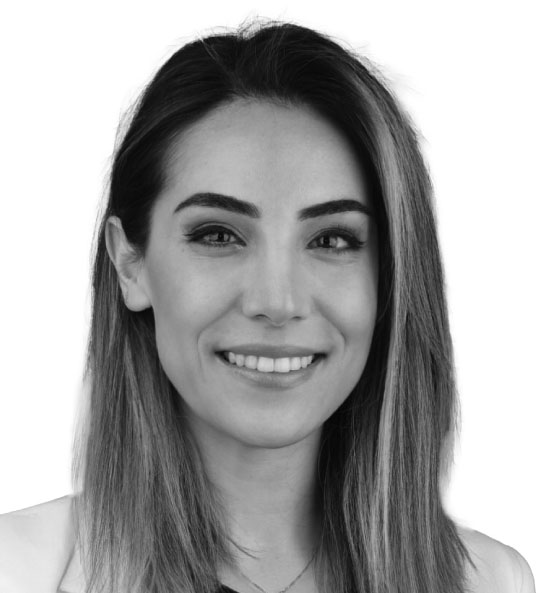
Dr. Nurver Karslı received her Dentistry Degree from Başkent University in 2012. In 2018, she received her specialty degree in Orthodontics from Ankara University Faculty of Dentistry. After her graduation, Dr. Nurver Karslı, who worked as a clinician in a private polyclinic in Samsun for 2 years, has been working as a Faculty Member in the Department of Orthodontics at Karadeniz Technical University Faculty of Dentistry since 2020.
She is a ClearCorrect Clinical Speaker.
It is biomechanically challenging for orthodontists to correct deep bite malocclusions with clear aligners. Regretfully, the effectiveness of using clear aligners for deep bite correction has not improved much despite technological advancements, and the result for these patients is typically long-term aligner treatment with modest improvements in overbite. Therefore, the biomechanical disadvantages and difficulties of aligners should be considered in deep bite treatment with clear aligners. In this presentation, digital planning considerations in the treatment of deep bite malocclusions with aligners will be focused. Attachment design, elastics, additional mechanics and the use of bite ramps will be discussed to increase clinical success. In addition, all these details will be supported by cases and current studies.

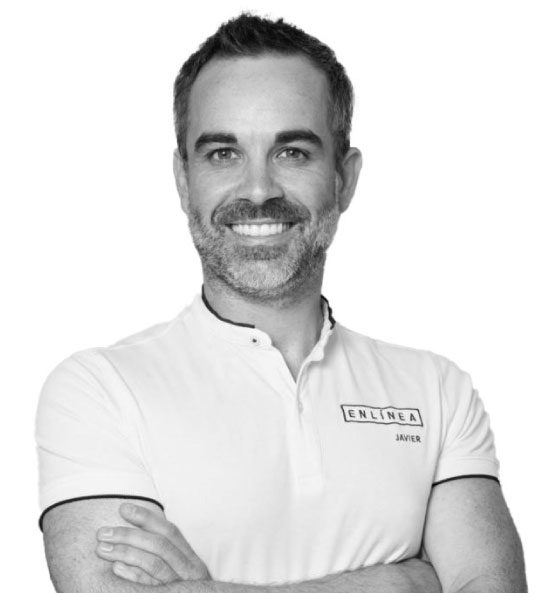
Javier Lozano Zafra, DMD, PhD
Orthodontist exclusively dedicated to clear aligners
Author of “Clear aligner techniques” (Wiley, 2021)
Director at Common Sense Aligners
Doctor Lozano will address most of the issues any doctor using clear aligners face due to the differences in between digital planning of the treatments and clinical expression of the movements.
Therefore, he will analyze impact of stripping accuracy on individual tooth movements (and how to avoid this issue) and interpretation of CBCT integration on ClinCheck software in regards to fenestrations.
Many doctors struggle with treatments involving teeth extractions and clear aligners. In some cases they find posterior open bites associated to bowing effect, lack of fitting and problems when trying to solve torque loss in the anterior segment.
During his course doctor Lozano will focus on staging protocols which avoid these undesired effects, as well as attachment selection and careful patient monitoring during treatment.
He will also share his strategies on using auxiliary techniques, such as power arms, sectional wires or buttons and elastics to help solving 100% of the clinical situations that can be seen in any dental office.

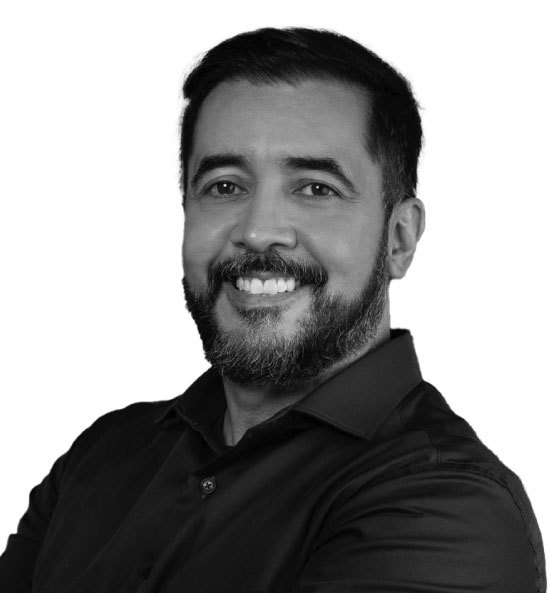
Specialist in Orthodontics - University of São Paulo
Master's Degree in Orthodontics - UNIARARAS São Paulo
Coordinating professor of Specialization in Orthodontics program at Prime Institute- Brazil
Columnist for Dental Press Clinical Orthodontics
International speaker
Auxiliary loops can significantly accelerate orthodontic mechanics through the three-dimensional control of dental units to be moved. When used supported by TADs, they additionally offer the advantage of avoiding side effects on anchor teeth. There are various mechanics that are challenging to address, specially with aligners. In these cases, the use of hybrid mechanics can significantly accelerate the treatment. Mechanics such as anterior teeth retraction, correction of the curve of Spee, molar uprighting with space closure, extrusion with control of high canines, among other hybrid treatments, will be demonstrated and discussed from both clinical and biomechanical perspective.
The finishing phase of orthodontic treatment is pivotal, encompassing an array of strategies aimed at achieving optimal occlusion, functional integrity, and aesthetic excellence. During this critical juncture, it is imperative for the orthodontist to focus meticulously on nuances that significantly influence the outcome, distinguishing between exemplary case completion and an inability to attain the desired level of sophistication.
This presentation is designed to empower orthodontists by elucidating protocols and evaluative techniques in the manipulation of bends, torques and loops. The goal is to facilitate the mastery of case refinement, ensuring the highest standard of orthodontic excellence.

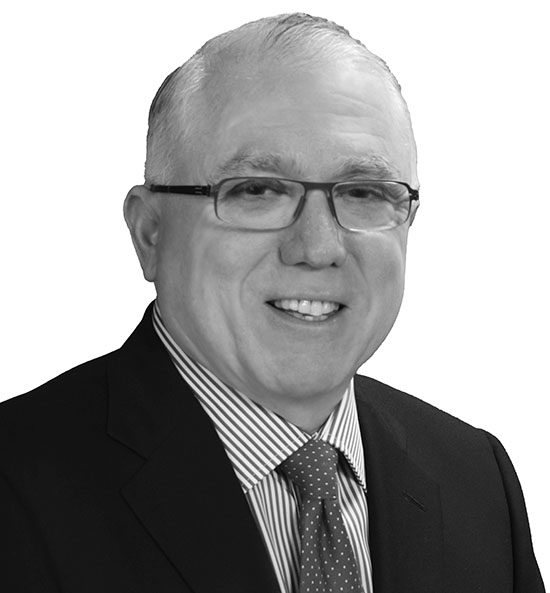
Dr. Ravindra Nanda is Professor Emeritus and former Head of Division of Orthodontics, University of Connecticut, Farmington, U.S.A. Currently, he is also Adjunct Professor at The ADA Forsyth Institute, Cambridge, MA.
He received his dental and orthodontic training first at the Kong Georges Medical College, Lucknow, India and then from Nymegen, The Netherlands and the University of Connecticut. He also received a Ph.D. from the University of Nymegen. Since 1972 he has been associated with the University of Connecticut in various academic roles including Chair of Orthodontics from 1991 to 2017.
He has authored with his colleagues more than 300 scientific papers. He is Editor-in-Chief of Progress in Orthodontics. He is also an associate editor of Journal of Clinical Orthodontics.
He is the Past President of North Atlantic Component of Angle Society. He is a Honorary Fellow of WFO and has given prestigious Mershon Lecture and Angle Heritage Award Lecture at AAO meetings and Sheldon Friel Lecture at EOS Congress. He has been recognized with various awards from numerous international orthodontic organizations including honorary memberships.
He has worked extensively in the area of biomechanics, temporary anchorage devices and on improving orthodontic care. He is highly sought after speaker at national and international orthodontic organizations.
Dr. Nanda has authored ten textbooks. His recent book is Principles and Biomechanics of Aligner Orthodontic Treatment (with Castroflorio, Garino and Ojima).
In recent years digital orthodontics has made a big impact in diagnosis and treatment planning. Another area has been construction of orthodontic appliances, customized brackets and clear aligners. This presentation will discuss impact of digital orthodontics in delivery of orthodontic forces and moments, treatment outcomes, and overall duration.

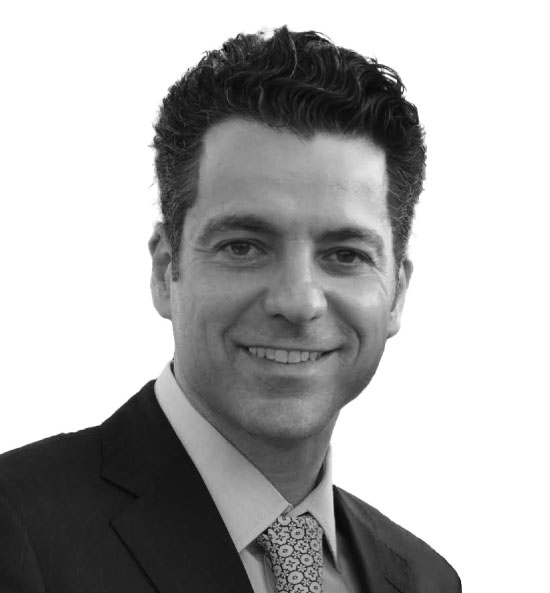
Prof. Riccardo Nucera graduated with honors in Dentistry in 1999 from the University of Messina. He earned his Ph.D. degree in “Dental Science” in February 2003. In April 2008, he obtained a second Ph.D. degree in “Orthodontic and Pedodontic Sciences”. In 2011, he completed a three-year residency program in Orthodontics at the University of Chieti-Pescara. From 2011 to 2019, he worked as an assistant professor at the University of Messina. Since 2019, he has held the position of academic professor in service at the University of Messina, where he is responsible for the Integrated Course in Orthodontics and Gnathology at the Dental School. Currently, he serves as the Director of the three-year residency Orthodontic Program of Messina University and holds the position of Director for the one-year master’s program in "Clinical Orthodontics." Additionally, he is the Head of the Clinical Orthodontic Service at the University Hospital “G. Martino” of Messina. In 2023, he became a certified member of the European Board of Orthodontics. Prof. Riccardo Nucera has been a speaker at numerous national and international congresses, and he is the author of numerous scientific articles on orthodontic topics, published in highly rated international peer-reviewed scientific journals. Prof. Riccardo Nucera won several awards for his scientific activity, including the Tiziano Baccetti Prize in 2017. At the moment, he serves as an editorial board member of several orthodontic scientific journals. His areas of expertise include the clinical application of digital orthodontics, CBCT imaging, early treatment, biomechanics and skeletal anchorage.
In recent years, the digital revolution in dentistry has significantly changed the orthodontic clinical routine from diagnosis to treatment strategies. A workflow can be defined as a sequence of steps that, once executed, are able to achieve a specific diagnostic or therapeutic goal. The aim of this presentation is to describe three different digital workflows that present significant advantages compared to traditional analog workflows. During the presentation, the steps of three different digital workflows will be illustrated through the presentation of three different clinical cases. The benefits derived from the new digital approach will be analyzed and discussed. At the end of the presentation, conclusions and take-home messages will be illustrated.

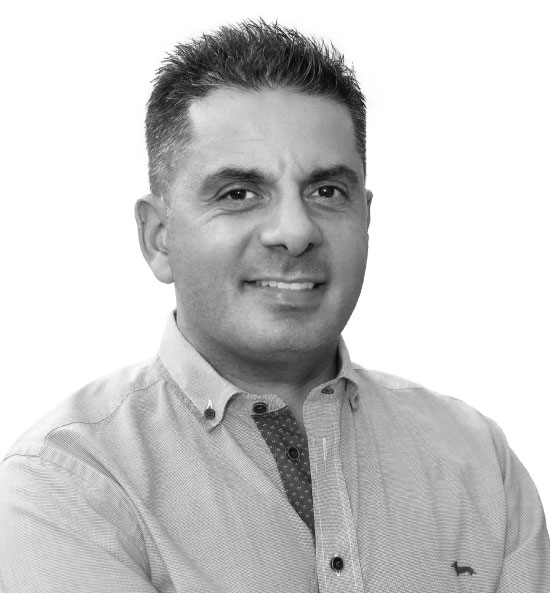
Nearchos C. Panayi, is an orthodontist based in Limassol, Cyprus. He is an assistant Professor of Orthodontics at the European University Cyprus, Dental school and a visiting Research Scientist at the Clinic of Orthodontics,Center of Dental Medicine, University of Zurich, in Switzerland. He studied dentistry at Athens Dental School (1992–1997) and orthodontics at Tel Aviv University (1998–2001) before building his private practice, which has grown into two fully digital orthodontic offices in Limassol and Larnaca, Cyprus. His passion for digital technology encouraged him to use it in orthodontics, and as a huge fan of the in-house 3D designing and printing concept in orthodontics, Dr Panayi has helped develop concepts, ideas, and methods that will transform traditional orthodontics to customized-centered digital orthodontics. He is the inventor of the orthodontic CAD software Ubrackets for in-house designing of customized fixed orthodontic appliances, and he introduced the use of general-purpose CAD software in orthodontics for orthodontic appliance design. He is the editor of «DIY, Design It Yourself Orthodontics» book that was released by Quintessence USA in July 2021. He is a co-author in other orthodontics books and published articles on in –house customized brackets, aligner printing and bracket material research. He is an associate editor of the “Progress in Orthodontics” journal. He is married and has six children.
Orthodontic aligner treatment has been in the orthodontic field since the late 90s. Thermoforming procedure is the most common procedure for aligner manufacturing while a big change in aligner treatment is the invention of aligner resins allowing the direct aligner 3D printing. The whole workflow is different compared to the traditional thermoforming. Each workflow step is important in order to achieve the manufacturing of accurate and efficient aligners. Studies have been conducted in order to investigate the material, aligner printing accuracy, aging etc. Nevertheless, more research has to be conducted to investigate printed aligners’ properties and optimize printed aligners' outcome.
An equally interesting field is custom brackets which are designed and printed in the orthodontic office. A dedicated CAD software enables the orthodontist to design (based on a digital setup), orthodontic brackets which can be printed using various materials creating a fully customized orthodontic treatment along with customized archwires. Nevertheless, the secret for the creation of an adequate bracket for a successful orthodontic treatment is the bracket material itself. Studies have been conducted to investigate possible materials to be used, while more research has to be performed in order to create a consistent and accurate printing workflow which will allow the use of customized brackets creating a self-sufficient office environment.

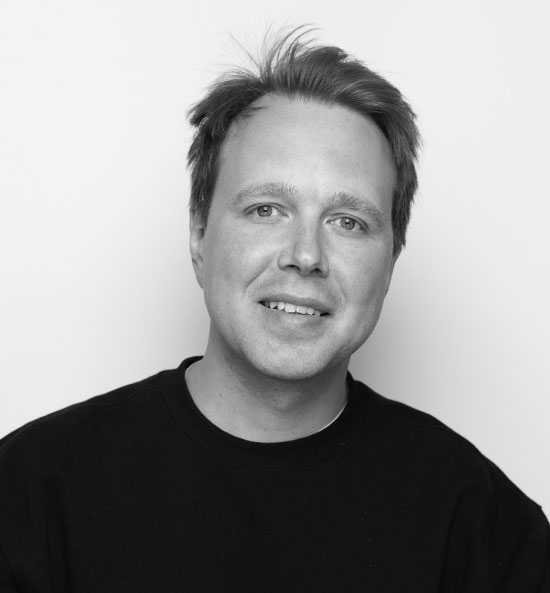
Alexander Plaksin, currently practicing as an Orthodontic Specialist. A graduate of the Central Research Institute of Dental and Maxillofacial Surgery, Moscow (2008), he was inspired to pursue a career in orthodontics. Co-Founder at DentalMesh company. Now exploring the world of 3D imaging, writing articles, and contributing to the development of orthodontic IT products.
The convergence of CAD/CAM and CBCT technologies represents a significant advancement in orthodontic treatment, enabling more precise and efficient management of complex cases. Initially, the critical role of comprehensive CBCT assessments is highlighted.
This step ensures a deep understanding of each patient's unique anatomical features, laying the groundwork for informed decision-making. Following this, the selection of orthodontic appliances, specifically TADs and CAD/CAM-produced devices, is discussed.
This section emphasizes the customization capabilities, focusing on palatal anchored appliances. The presentation concludes with illustrative clinical cases that demonstrate the benefits of employing CAD/CAM technology, informed by CBCT imaging.

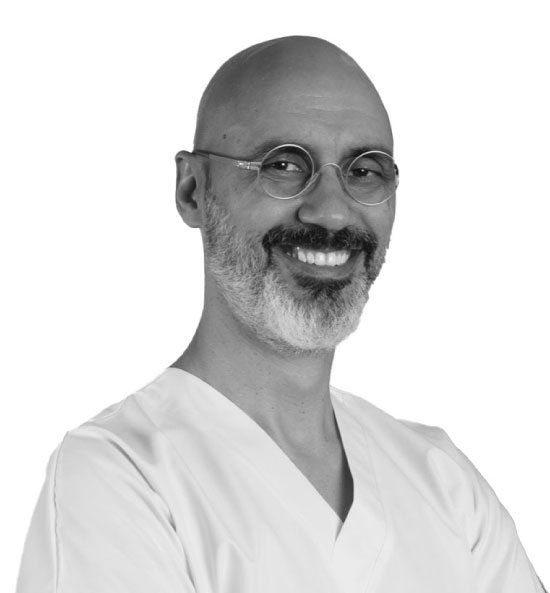
Graduate, University of Marmara, Faculty of Dentistry
PhD in Orthodontics, University of Marmara, Faculty of Dentistry
Assistant Professor of Orthodontics, University of Yeditepe (2000-2006)
Associate Professor of Orthodontics, University of Yeditepe (2006-2009)
Graduate, “The Roth/ Williams International Center of Functional Occlusion”, 2 years course (2008-2010)
Professor and Head of Orthodontic Department in University of Altinbas
Private practice limited to orthodontics and TMD in Istanbul
Lecturer in FACE Courses
Before initiating orthodontic treatment, a treatment plan should be tailored to the individual needs of the patient and our treatment end goals. To formulate a treatment plan, it is essential to first identify the problems in the case comprehensively. This can only be achieved by diagnosing each problem one by one correctly.
Thorough analysis of the teeth and occlusion, which are vital components of the chewing system, is crucial for accurately establishing a differential diagnosis, which holds significant importance in the success of treatment. In this regard, there is a necessity for various tools used in both the clinic and the laboratory. Many of these tools, which have been utilized in dentistry for many years, have been replaced by modern devices and software products that enhance our efficiency and streamline our workflow. Consequently, the transition from analog workflow to digital workflow has commenced in our clinics.
This presentation will delineate which analog and digital methods we employ in diagnosis and treatment planning in our clinic, with their advantages and disadvantages explained comparatively through case presentations.
Tooth extraction remains a fundamental aspect of orthodontic treatment. Creating a treatment plan requires a thorough understanding of the decision-making process regarding whether or not to extract teeth, followed by the implementation of treatment mechanics and anchorage control.
In this course, we will begin by discussing the criteria guiding the decision-making process for tooth extraction, utilizing clinical insights and evidence-based practices to determine which teeth should be extracted. Subsequently, various mechanical techniques, methods, and auxiliary tools used in closing extraction spaces will be demonstrated through case presentations of treated cases.
Anchorage control is also a key element in orthodontic treatment, especially during the closure of tooth extraction spaces. The presentation will address the anchorage practices and protocols we utilize, including the use of mini screws, to ensure predictable anchorage during treatment.
In conclusion, this presentation will comprehensively cover the process of tooth extraction, which plays a significant role in orthodontic treatment planning. I will share insights into the decision-making process regarding tooth extraction and the mechanical techniques applied in our clinic during treatment, accompanied by case presentations.

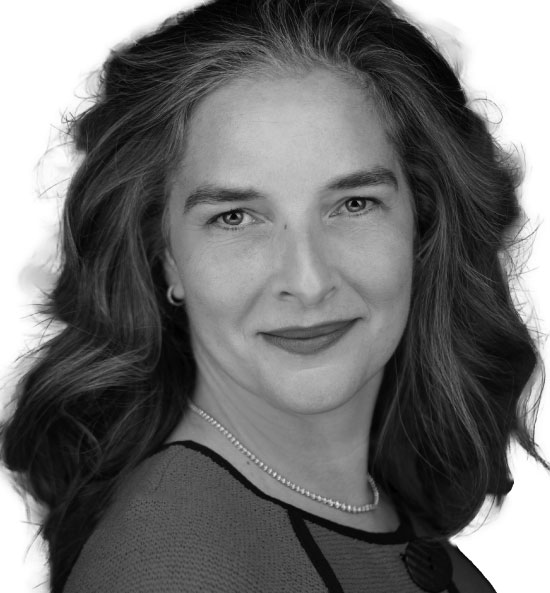
Dr. Dania Tamimi graduated with a dental degree from King Saud University, Riyadh, Saudi Arabia. She trained at Harvard School of Dental Medicine and earned a doctorate of medical science (DMSc) and certificate of fellowship in Oral and Maxillofacial Radiology in 2005. She is board certified by the American Board of Oral and Maxillofacial Radiology (ABOMR) and is a Fellow of the Royal College of Physicians and Surgeons (Glasgow).
She is a reviewer and an Editorial Board member for Oral Surgery, Oral Pathology, Oral Medicine and Oral Radiology (OOOO), as well as a reviewer for DMFR, Oral Radiology, Head and Neck, Angle Orthodontist and AJO-DO. She is the lead author on two textbooks: “Specialty Imaging: Dental Implants” (which has been translated to Portuguese and Russian) and “Specialty Imaging: Temporomandibular Joint and Sleep-Disordered Breathing” and a co-lead author on “Diagnostic Imaging, Oral and Maxillofacial” (translated to Spanish). She lectures nationally and internationally.
She currently runs her oral and maxillofacial radiology private practice in Orlando, Florida.
Occlusal changes can be noticed throughout the course of an orthodontist's career. Patients with previous maximum intercuspation may present months or years later with open bites, cross bites, occlusal cants and other changes. There are underlying etiologies for these bite changes that can be investigated and identified radiographically. This talk will show some of these underlying etiologies, such as TMD, airway restriction and pathology. The aim is to help the orthodontist identify the risk factors for development of these bite changes in order to prevent them, and to be able to pinpoint the exact etiology of the bite change so that the correct treatment can be rendered.

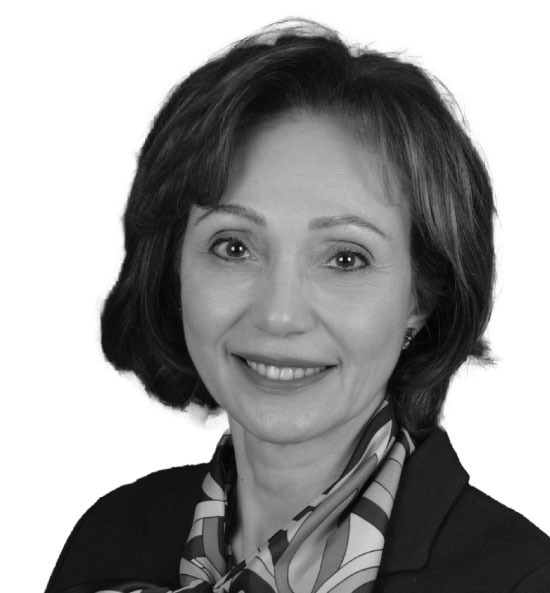
TÜLİN TANER is a full-time Professor in Department of Orthodontics Faculty of Dentistry, Hacettepe University. She had her PhD degree in Orthodontics in 1995. She worked as a Board member in Turkish Orthodontic Society between 1996-1998 and 2000-2002 years. She was elected a member of the Faculty Board in 2004, the Faculty Board of Directors in 2009 and acted as a Vice Dean responsible from education at Hacettepe University Faculty of Dentistry between 2012-2016. She served as a Vice Director of Sleep Disorders Diagnosis and Treatment Application and Research Center between 2010-2018 and Commission Member of Scientific Research Projects Coordination Unit of Hacettepe University between 2014-2019. She was the Head of the National Dentistry Education Programs Accreditation Board between 2019-2021. She has been working as the Chair of the Orthodontics Department since 2012, Dean of Faculty of Dentistry Hacettepe University beginning on June 21, 2021 and a member of the Executive Board of the Council of Deans of Dental Faculties in Turkey. She has been a member of the multidisciplinary team that carries out the diagnosis and treatment of obstructive sleep apnea patients and has national and international conferences, publications, book chapters, research and theses related to sleep apnea since 2004.
Although obstructive sleep apnea (OSA) is a sleep-disordered breathing problem that is increasingly common and causes serious health and social consequences, it is observed that social awareness on this issue is not as high as it deserves. Dentists and orthodontists, who are frequently consulted by people with this condition, can make important contributions to the diagnosis and treatment of OSA. In this presentation, the evaluations of patients applying to the orthodontic clinic in terms of OSA risk, orthodontic and orthognathic treatment goals in people with OSA, and post-orthodontic treatment evaluations are explained on cases, supported by current studies.


A high percentage of adult patients who come to our practice have skeletal malocclusions. About 70% of them are adults and young people. About 30% of these patients have a skeletal malocclusion. We have 2 options to treat these patients: orthodontics only or a surgical approach. In this lecture I will present a group of adults and young adult patients, most of them with maxillary hypoplasia treating all of them with different options but focusing on the use of 3D technology to develop a predictable treatment. We will also show how we use the 3D technology to develop a bone supported customized expansor with surgical guides to do a direct method .
-Degree in Medicine and Dentistry . Univ of Santiago de Compostela MD, DDS
-Post-Graduate Degree in Orthodontics. Univ of Valencia. MS ( Prof JA Canut )
-Research Fellowship at University of Ohio ( Prof. Zeev Davidovitch )
-Ph .D in Medicine and Surgery. PhD . Univ of Santiago de Compostela
-Spanish Board of Orthodontics Member
-European Board of Orthodontics Member
-Ibero American Board of Orthodontics Member
-Active Member of The Angle Society of Europe
-Professor of Orthodontics at School of Dentistry . Univ of Santiago de Compostela
-Vissiting Professor University of Valencia, Oviedo, Madrid -Complutense, international of Cataluña Teknon Barcelona , Ferrara University ( Italia )
-"Houston Award" received from European Orthodontic Society
-"Renato Africa APOS Trend Award . From Asian Pacific Orthodontic Society
-"Moriyon" and "Jose Antonio Canut" Awards. Received from the Spanish Orthodontics Society.
-Past President of the examination committee of the Spanish Board.
-President of Spanish Society of Orthodontist .SEDO
-President of national commission of dental specialities
-Member of the Scientific Comitee of the Angle Society of Europe
-Past - President of the Spanish Association of Specialist in Orthodontists. AESOR
-Past President of the Scientific Comitee of SEDO
-Co Developer of Full Smile System
-Author of numerous articles and chapters.
-I have given Lectures and Courses in Spain , Portugal , Belgium , Italy , Germany , Austria , Poland , Turkey , Russia , Switzerland, Czech republic , Libano , Jordán , UAE (Dubai) , Israel , Cuba , México ,Panamá , Hungary , China , England , USA , Greece , Sri Lanka . Saudí Arabia , South Africa , Egypt , Palestine , Ireland , Honduras
-Orthodontist in Santiago de Compostela - Orense
-AMBASSADOR of AAO ( American Association of Orthodontics ) 2016

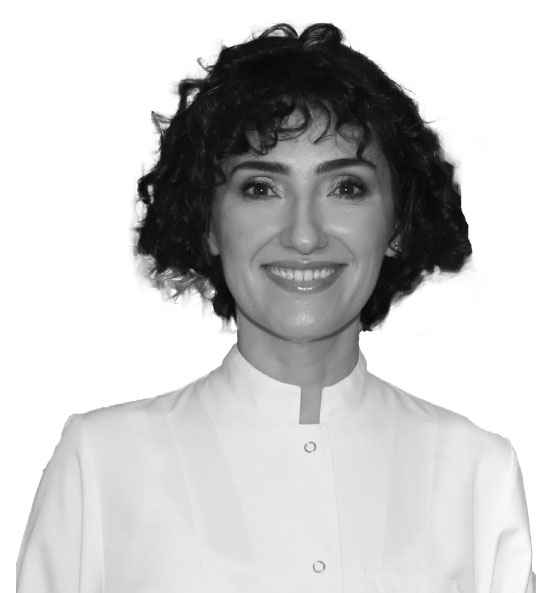
Dr. Nihal Kaya attended Hacettepe University Faculty of Dentistry in 1991 and graduated in 1996 with the second highest GPA which has brought her the Science Encouragement Award honored each year by the Faculty. She then joined Selçuk University, Faculty of Dentistry, Department of Orthodontic in 1998 for her graduate study and completed the PhD program in 2004 with a clinical thesis about Rapid Canine Distalization by Using Continuous Forces with Distraction Osteogenesis Method.
Dr. Kaya is a member of the Turkish Orthodontic Society (TOS), Freelance Orthodontists Association (FOA), Turkish Aligner Society (TAS), European Orthodontic Society (EOS) and European Aligner Society (EAS). She has been and currently working as a private practice orthodontist since 2007 in her own clinic in Yalova.
It is important to focus primarily on maintaining case-specific treatment goals in the finishing and detailing which is the final stage of orthodontic treatment. Our goal is to achieve a “six-key” occlusion with the best possible aesthetics by including teeth surrounded by healthy periodontal tissue and musculature that performs ideal functional movements of the jaws. To achieve this, eliminating tooth size discrepancies, establishing correct tip of the anterior and posterior teeth, providing adequate incisor torque, obtaining correct contact points and marginal ridge relations, final management of the curve of spee, harmony of arch forms, checking functional movements are reviewed at the finishing stage. It is essential to have a good retention protocol for permanent maintenance of the achieved results after the treatment of malocclusion.
This presentation will review and summarize the horizontal, vertical, transverse, dynamic, cephalometric and aesthetic goals with case examples which allows the orthodontist to reach at a “well-finished” case and will explain a successfully repeatable protocol in the construction of bonded retainers in detail.
